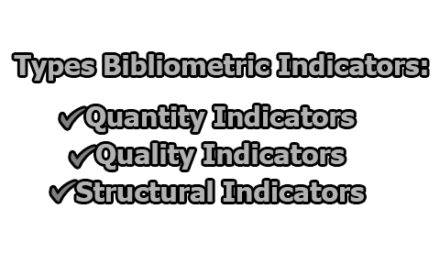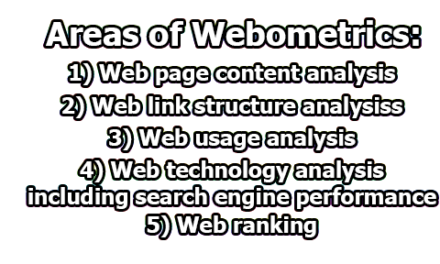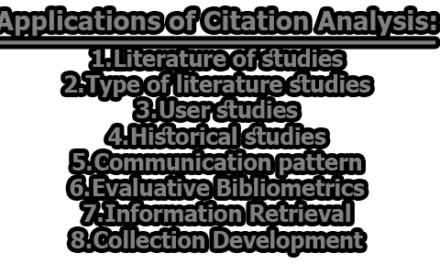Bibliometric and Webometric Methods for Assessing Research Collaboration:
Research collaboration has become a vital aspect of academic research. Collaboration involves different researchers coming together to work on a particular research topic. It is essential for researchers to collaborate because it enables them to share knowledge, skills, resources, and expertise, resulting in improved research outcomes. Measuring the impact of research collaboration has been a significant concern for scholars and policymakers. Bibliometric and webometric methods have emerged as important tools for assessing research collaboration. This article discusses bibliometric and webometric methods for assessing research collaboration.
Bibliometric Methods:
Bibliometric methods are widely used to assess research collaboration, which is the process of working together with other researchers to achieve common research goals. Bibliometrics is the quantitative analysis of research output, such as publications, citations, and co-authorship, to measure the impact and productivity of research.
One widely used bibliometric method for assessing research collaboration is co-authorship analysis, which examines the pattern of authorship across publications. Co-authorship analysis can reveal the extent and nature of collaboration, such as the number of authors per publication, the degree of interdisciplinarity, and the distribution of contributions among authors (Larivière et al., 2012). Co-authorship networks can also be visualized to show the patterns of collaboration among researchers (Newman, 2001).
Another bibliometric method for assessing research collaboration is citation analysis, which examines the pattern of citations among publications. Citation analysis can reveal the impact and influence of research, as well as the extent and nature of collaboration. For example, a high number of citations to a publication can indicate that it has had a significant impact on the field, and the number and diversity of citing authors can indicate the extent of collaboration (Hirsch, 2005).
A third bibliometric method for assessing research collaboration is journal co-citation analysis, which examines the pattern of co-citations among journals. Journal co-citation analysis can reveal the intellectual structure and research topics of a field, as well as the extent and nature of collaboration among journals. For example, journals that are frequently co-cited together may indicate a shared research topic or the research community, and the number and diversity of co-citing journals can indicate the extent of collaboration (Small, 1973).
In addition to these bibliometric methods, there are also emerging methods for assessing research collaboration that uses alternative sources of data, such as social media, grants, and patents (Sugimoto et al., 2017). For example, social media analysis can reveal patterns of collaboration among researchers who engage with each other on Twitter or other platforms, and grant and patent analysis can reveal patterns of collaboration among researchers who receive funding or file patents together.
In summary, bibliometric methods provide valuable insights into a research collaboration, including the extent, nature, and impact of collaboration among researchers. These methods can help researchers, funders, and policymakers understand the dynamics of collaboration in different fields, and can inform strategies for promoting and supporting collaboration among researchers.
Webometrics Methods:
A webometric method is a type of research that deals with the measurement of web-based information. It uses various techniques, such as hyperlink analysis, web impact factor, web citation, and social media analysis, to assess the impact of research collaboration (Thelwall, 2009). This method can be used to analyze the relationship between universities, researchers, and research institutions based on the presence and interaction of their web pages. The webometric method provides information on the number of links, pages, and domains that are associated with a particular research collaboration, providing insight into the impact and visibility of the collaboration. For example, the number of hyperlinks between websites can be used as a measure of collaboration between researchers and institutions (Thelwall & Kousha, 2014).
Both webometric and bibliometric methods can be used to identify the characteristics of successful research collaborations. For example, a study by Small et al. (2014) used webometric and bibliometric analyses to identify the factors that contribute to successful research collaborations in the field of nanoscience. The study found that successful collaborations tended to involve researchers from different disciplines and institutions and that they tended to have a higher level of collaboration intensity, as measured by the number of co-authorships and the frequency of collaboration events.
In conclusion, bibliometric and webometric methods provide useful tools for assessing research collaboration. These methods can be used to measure the strength and impact of collaboration, identify successful collaboration patterns, and inform policy decisions related to research funding and collaboration initiatives.
References:
- Larivière, V., Kiermer, V., MacCallum, C. J., McNutt, M., Patterson, M., Pulverer, B., … & Curry, S. (2012). A simple proposal for the publication of journal citation distributions. bioRxiv, 008484.
- Newman, M. E. (2001). Scientific collaboration networks. II. Shortest paths, weighted networks, and centrality. Physical Review E, 64(1), 016132.
- Hirsch, J. E. (2005). An index to quantify an individual’s scientific research output. Proceedings of the National academy of Sciences, 102(46), 16569-16572.
- Small, H. (1973). Co-citation in the scientific literature: A new measure of the relationship between two documents. Journal of the American Society for Information Science, 24(4), 265-269.
- Sugimoto, C. R., Larivière, V., Ni, C., & Cronin, B. (2017). Journal indicators in research evaluation: An overview of uses and evolving landscapes. In Handbook of Quantitative Science and Technology Research (pp. 341-358). Springer.
- Thelwall, M. (2009). Introduction to webometrics: Quantitative web research for the social sciences. Synthesis lectures on information concepts, retrieval, and services, 1(1), 1-116.
- Thelwall, M., & Kousha, K. (2014). ResearchGate: Disseminating, communicating, and measuring scholarship? Journal of the Association for Information Science and Technology, 65(4), 821-832.
- Small, H., Hwang, S., Park, H. W., & Tijssen, R. J. (2014). The intellectual structure of nanoscience and nanotechnology research: How interdisciplinary is it? Journal of Nanoparticle Research, 16(6), 2426.

Library Lecturer at Nurul Amin Degree College










